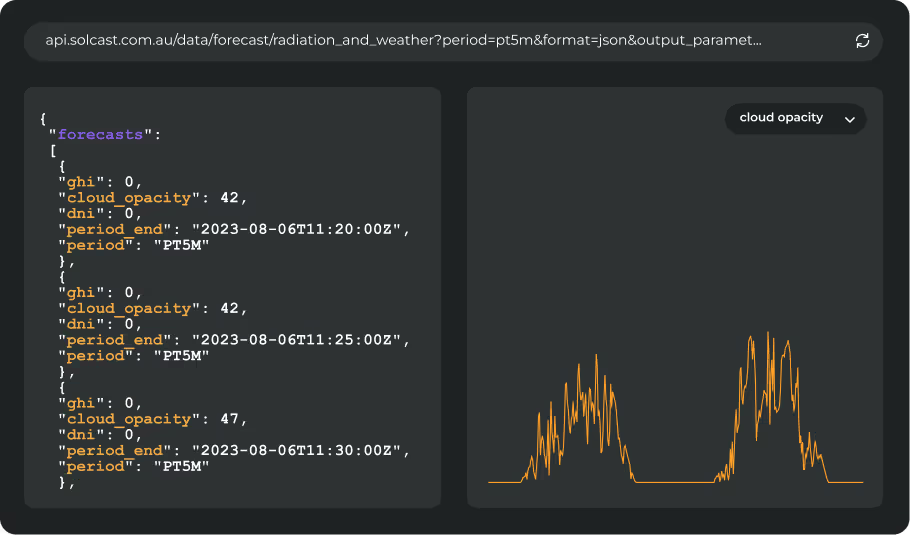Are you looking at forecasting power output for individual rooftop PV sites? Forecasts of rooftop PV output can be useful for predictive control of battery charging and discharging, control of smart devices, and the presentation of solar production information to your own residential customers in your apps. But most large scale weather data providers, require you to run your own power simulation for each site.
Solcast’s Rooftop PV Model uses our irradiance and weather data and forecasts to produce an output parameter Rooftop PV Power Output (kW) - i.e. production for a rooftop system. It’s an empirical PV model, designed for forecasting the production from rooftop PV systems (residential and commercial) where you have limited system specifications available. The model consumes Solcast’s irradiance, weather and snow soiling data, to produce PV power output estimates.
How to improve accuracy for your Rooftop PV model?
The Rooftop PV Model allows for both scale and accuracy. It can work on very little data (as little as the site capacity only), but can also be improved when more measurement data is available to capture things like shading and underperformance.
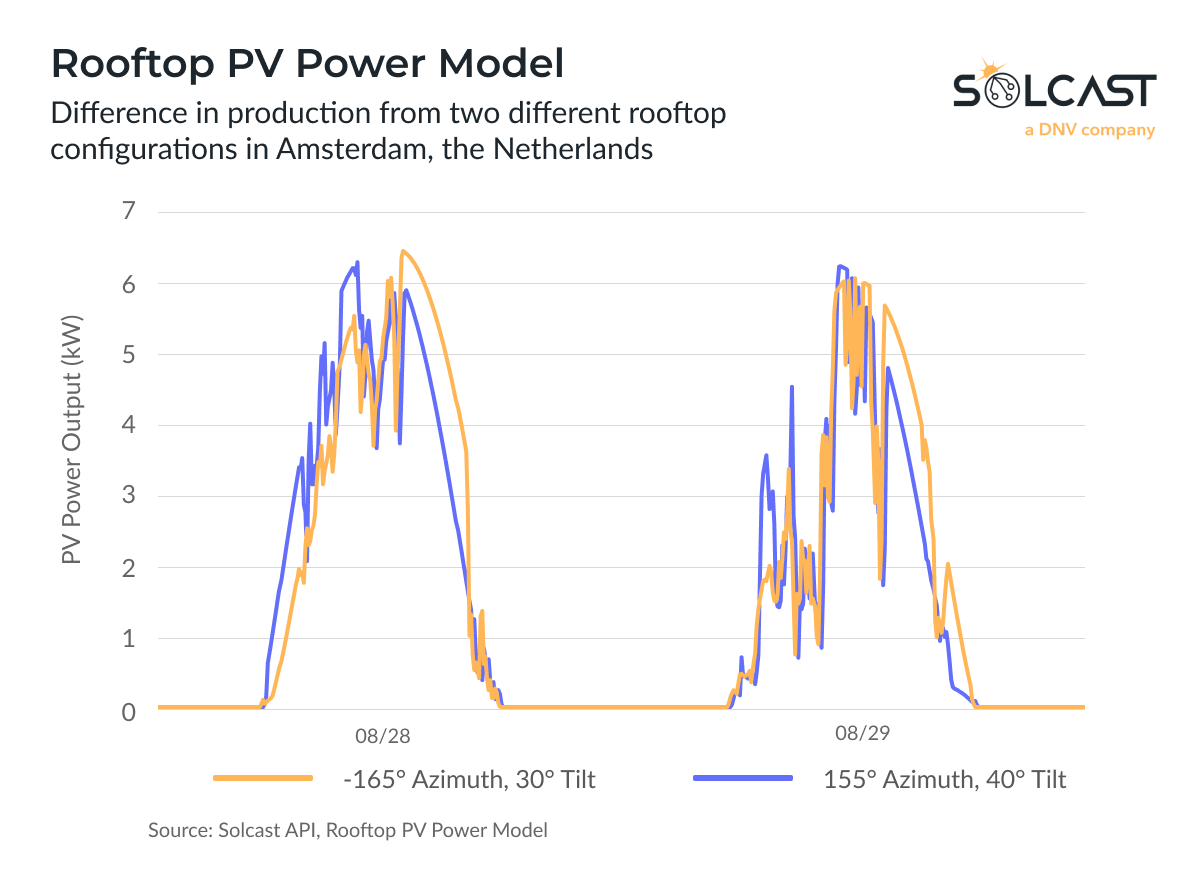
When you know the capacity and orientation (azimuth and tilt) of your PV system, and there is limited shading, the Rooftop PV Model produces good accuracy “as is”. Some users will improve accuracy a little by adjusting the loss factor, which has the effect of simply scaling the forecast up and down to better match the measured output.
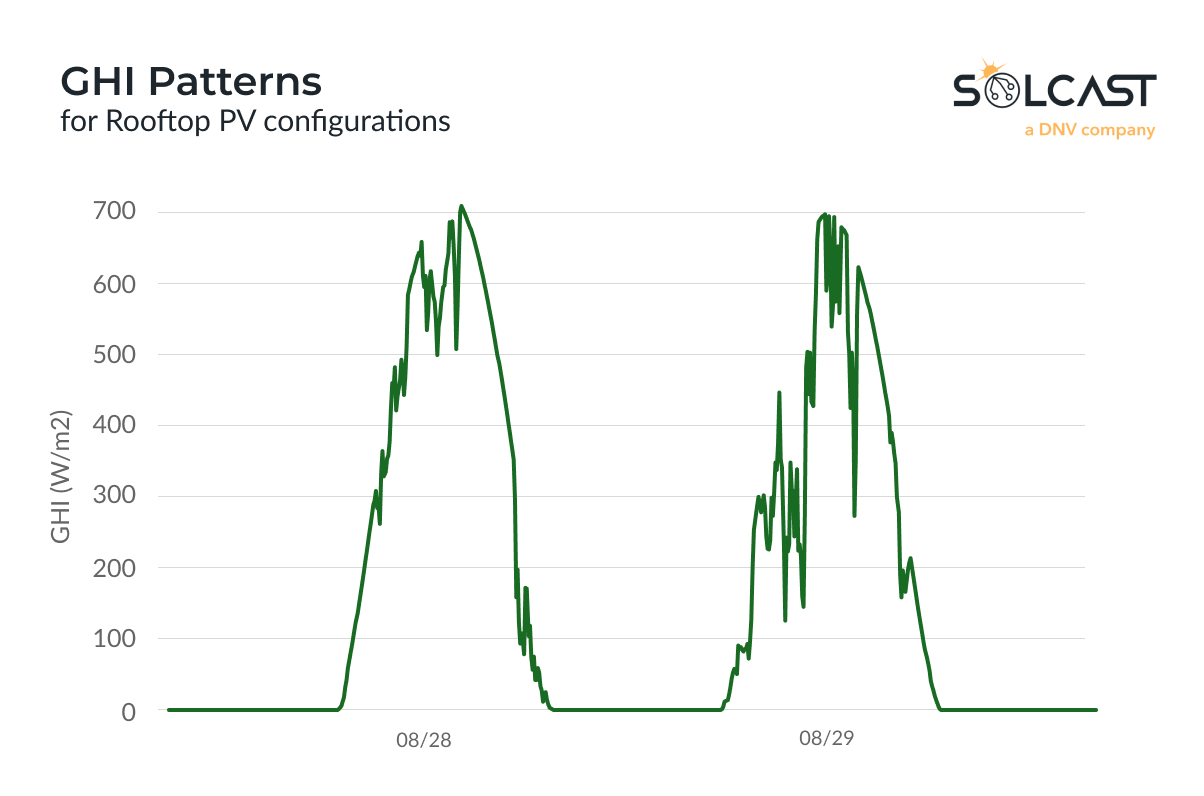
For further improved accuracy, recent history of power production measurements can be used for “Tuning” the Rooftop PV Power. This captures effects like shading by trees and buildings (which varies throughout the year), and helps with sites with multiple or unknown array orientation and configurations.
For rooftop sites, our data scientists can help with the Tuning if you need, however for rooftop sites we recommend you consider doing it yourself! This saves you money, avoids you needing to think about NDAs for transfer of your site measurement data, and gives you control. Tuning the Solcast Rooftop PV Model is a good alternative to trying to make your own PV model from scratch using Solcast inputs, which can be a long road and often misses factors like shading and snow soiling.
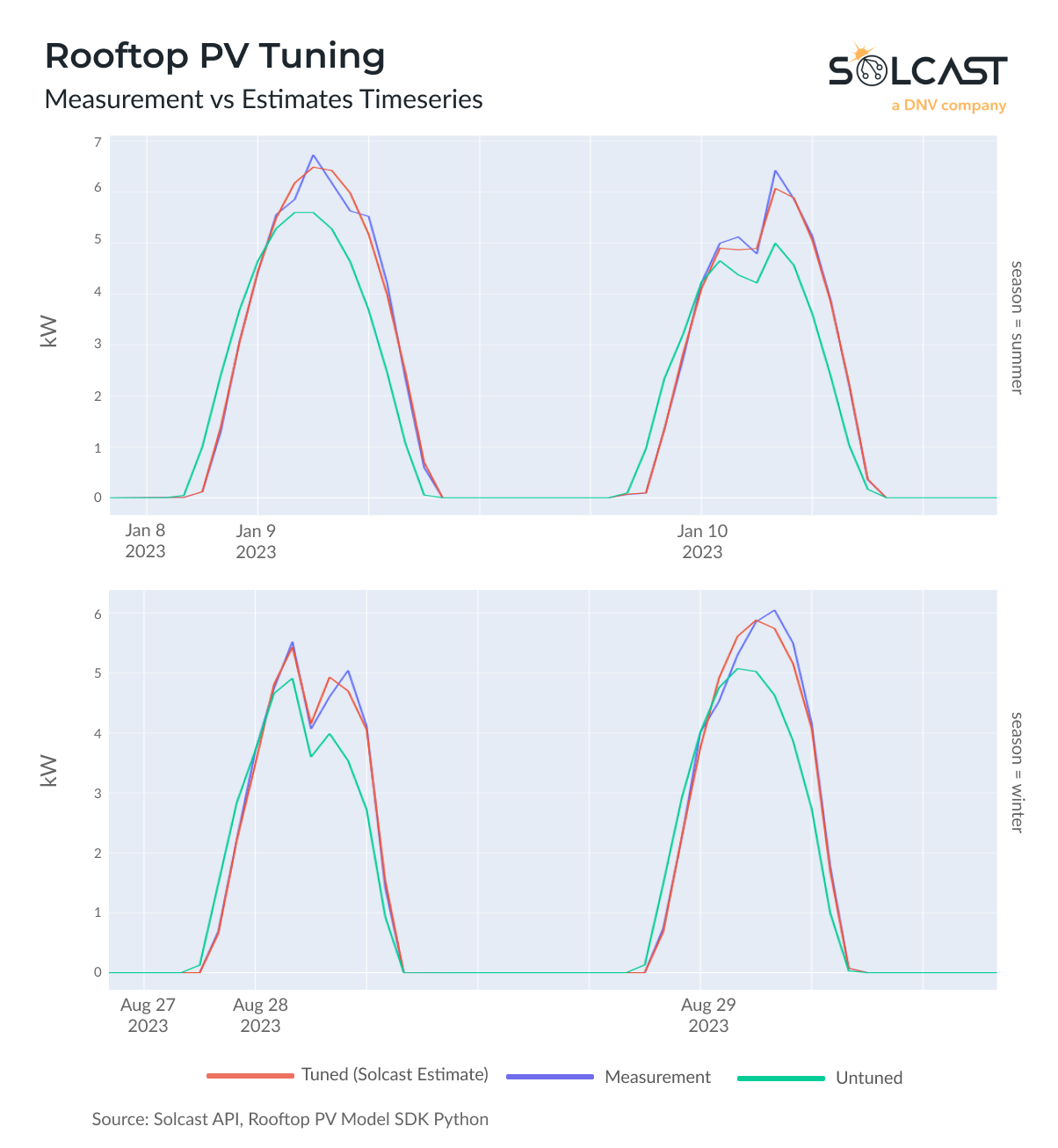
To get started with Tuning your rooftop sites, simply go to the Rooftop PV Tuning section of our Python SDK. If you want to learn more, reach out to our team.
If you're working on large utility-scale assets, we recommend using our Advanced PV Power model. It allows you to fine-tune various system components for higher accuracy, and we offer a regular tuning service to ensure your model stays accurate to production. Check out some insights and best practices to help improve your PV power forecast generation.








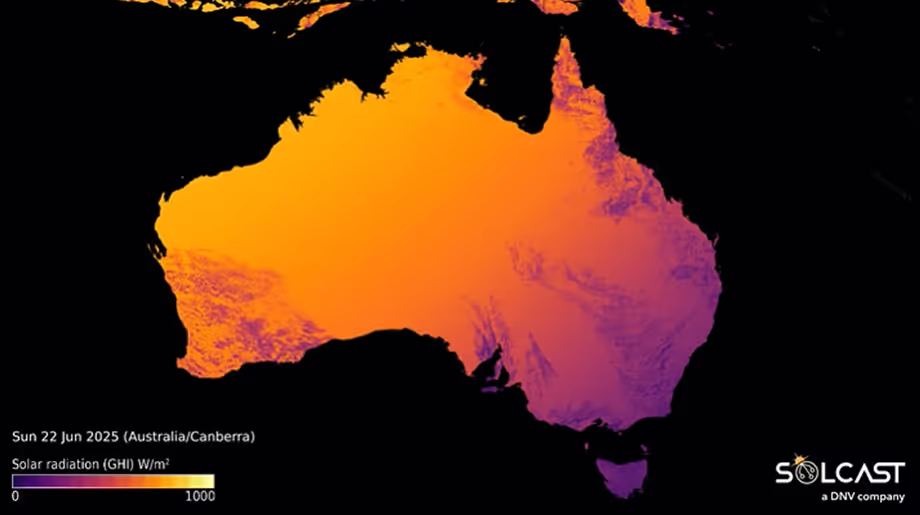
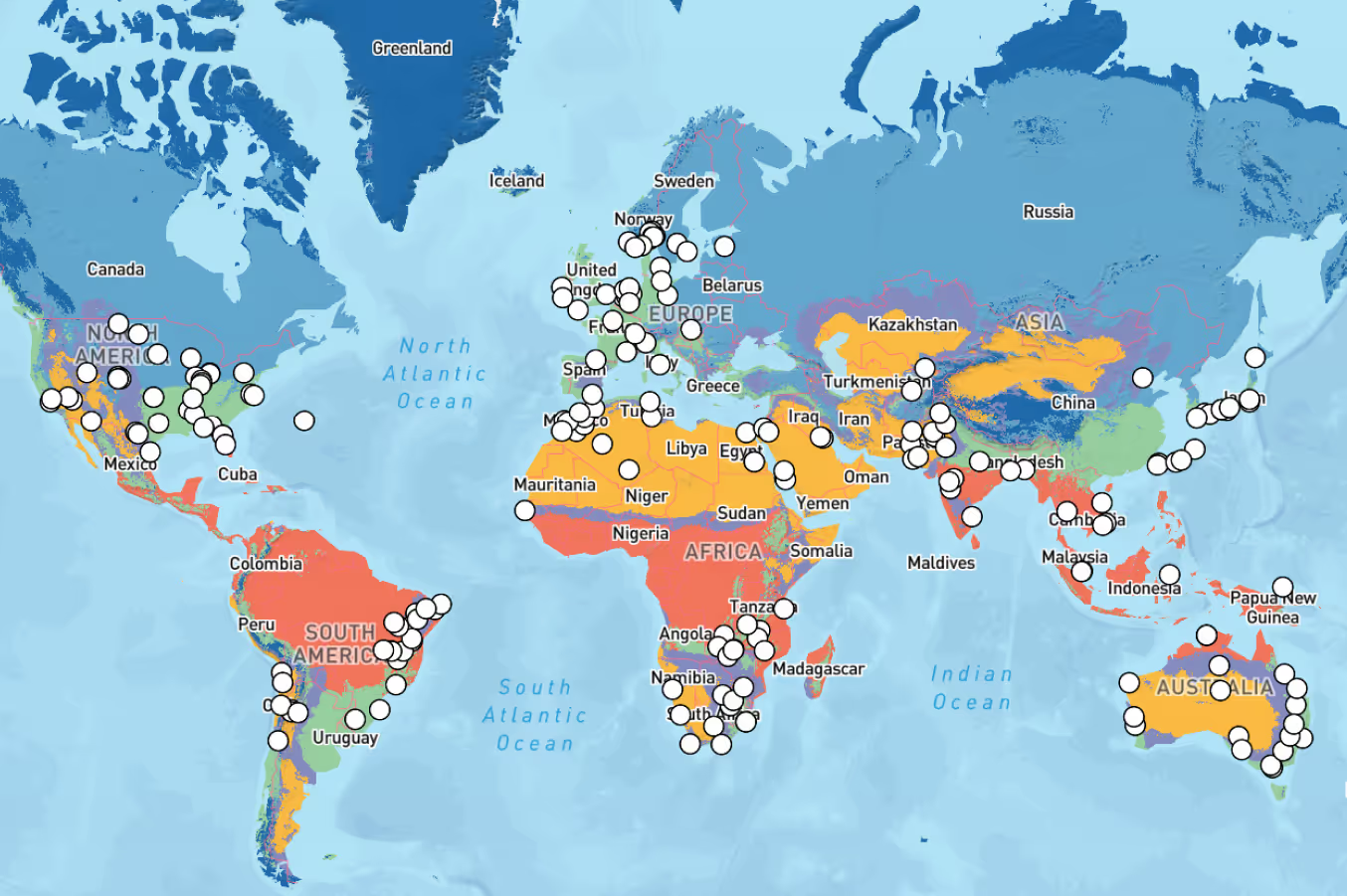
.avif)
